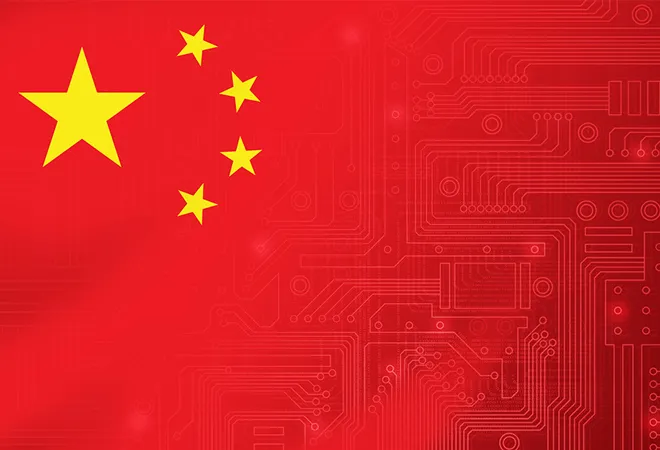
The recent border standoff between China and India at Ladakh confirms two political realities that must not be ignored. First, India must not allow the intrusion of Chinese firms into its telecommunications network. If societies will be digital, China should not be permitted to encode India’s public sphere. New Delhi must not license Huawei or ZTE to provide equipment for its 5G rollout. And second, India must not allow any Chinese-origin firm into its critical infrastructure in much the same manner that it was kept away from certain industrial projects in the past.
Apart from a thin ideological constituency and vested business interests, China has limited appeal left in much of India’s imagination. An authoritarian regime that has given Xi Jinping absolute power has now become predatory in its external engagements and is a caricature of an insecure bully. The courtesies of diplomatic speak have been dispensed with as it referred to Australia as a “
giant kangaroo that serves as a dog of the US”. The middle kingdom now has a medieval mindset that only seeks territory and markets for its benefit. That it continues on this course during the COVID19 pandemic reveals much about its naked ambitions.
Its incursions into Indian territory in Ladakh are part of this new grammar of engagement, which have been ably captured by analysts such as
Ram Madhav,
H.S. Panag,
Harsh V. Pant,
Kanchan Gupta, and
Manoj Joshi. This time around, China’s incursions may be another episodic distraction for its territorial ambitions in Hong Kong and Taiwan. Its contempt for India is more persistent. This is demonstrated by China’s self-serving support to Pakistani terror against India and its actions at the UN Security Council that seek to undermine New Delhi. That India, over the past decade, just refuses to bend frustrates this increasingly pompous nation and fuels its ire further.
This is China’s approach to India and each nation must make its own choice. For India’s national interest, the choice is clear. There is no more room to accommodate China’s economic affections while being scorched by the Dragon’s fire. My 10 December 2019 paper titled, “
5G Infrastructure, Huawei’s Techno-Economic Advantages and India’s National Security Concerns: An Analysis”, argued these points. The criticality of 5G technology is based not only on its speed but also on its all pervasiveness. The real power of 5G lies in its ability to be a network of networks — to simultaneously serve several verticals including governance, business, smart cities, education, mobility, and in the post-COVID19 world, healthcare through telemedicine along with most other human interactions.
This makes the way we negotiate 5G technology a vital matter for national security. Allowing Huawei or ZTE to be a 5G equipment provider to Indian telecommunications firms will be like asking the Chinese Communist Party to run our general elections. As we repulse China at the borders, we must ensure that we do not surrender our cities, homes and minds to that ideology. In fact, one major lapse on the part of India has been that it has allowed the creeping acquisition of India Tech by the Digital BRI, even as the country has opposed the Belt and Road in its physical manifestation.
The risk China Tech poses to Indian interests is real. Considering they are backed by an authoritarian regime that’s weaponising everything in its armoury, from trade and technology to medical equipment and humanitarian aid, the provisions by state-controlled Chinese firms are a global concern. Australia and the US have discovered it, Europe is in the process of finding out, and smaller nations will awaken to the consequences too late.
As a $3 trillion economy that has set its eyes on becoming a $10 trillion one in the 2030s, India cannot ignore the perils of the noxious interplay of Chinese Communist Party objectives and the capitalist façade represented by Huawei. This is especially problematic when juxtaposed with the 3,488 km long (and volatile) border that is now also being weaponised by the mandarins in Beijing. China’s recent incursions expose the persistence of this risk. As I had argued earlier, this continuing Chinese behaviour “has become a tipping point for security-embedded engagements such as the entry of Chinese firms into India’s critical infrastructure.”
The risk of Chinese state control over the actions of Chinese firms is not a matter of perception. Further, it is not restricted to India — the risk is global. If governments across the world in general, and India in particular, were to read the Chinese
National Intelligence Law (adopted at the 28th meeting of the Standing Committee of the 20th National People’s Congress on 27th June, 2017) carefully while keeping national interests in mind, they would not allow any Chinese firm to participate in their critical infrastructure. Here are excerpts from four Articles of the law:
Article 7: All organisations and citizens shall support, assist, and cooperate with national intelligence efforts in accordance with law, and shall protect national intelligence work secrets they are aware of.
Article 9: The State gives commendations and awards to individuals and organisations that make major contributions to national intelligence efforts.
Article 12: In accordance with relevant State provisions, national intelligence work institutions may establish cooperative relationships with relevant individuals and organisations, and retain them to carry out related work.
Article 14: National intelligence work institutions lawfully carrying out intelligence efforts may request that relevant organs, organisations, and citizens provide necessary support, assistance, and cooperation.
National security is not a choice. It is a primary assumption and the first responsibility of statecraft. A country that uses its military power to threaten other nations and its economic power to pervert free trade and steal technologies, will not think twice before using its technological influence to advance its strategic ambitions and lust for territory. These networks are India’s lifelines of growth and highways of aspirations. These will support economic growth, governance, innovations, and be the critical infrastructure that can cart India towards a $10,000 per capita income future. These must not be implicated by an erroneous choice in partners.
For India to
allow Huawei even in its 5G trials displays an act that’s not very different from India rooting for
China as a member of the United Nations Security Council against its own interests in 1950. Seven decades later, allowing Huawei into India mirrors the same sentiment — it is a signal that India is giving in to China’s bullying. The Narendra Modi government must undo this action and prevent Huawei from entering India’s high technology arena, and must exclude Chinese participation in India’s critical sectors and infrastructure.
It is hoped that miraculously China may change, but for now, unless Xi Jinping mends fences, New Delhi must continue to frame policies assuming the worst about Beijing’s intentions. As I have argued in my paper, Beijing cannot expect economic returns from India without making commensurate investments in building strategic trust. To rephrase, China has to climb its way up the trust vanguards of India before it enters the trust vaults of India. Until then, Made in China firms must be treated with as much caution and precaution as the nation is treating the
Made in China pandemic.
The views expressed above belong to the author(s). ORF research and analyses now available on Telegram! Click here to access our curated content — blogs, longforms and interviews.



 The recent border standoff between China and India at Ladakh confirms two political realities that must not be ignored. First, India must not allow the intrusion of Chinese firms into its telecommunications network. If societies will be digital, China should not be permitted to encode India’s public sphere. New Delhi must not license Huawei or ZTE to provide equipment for its 5G rollout. And second, India must not allow any Chinese-origin firm into its critical infrastructure in much the same manner that it was kept away from certain industrial projects in the past.
Apart from a thin ideological constituency and vested business interests, China has limited appeal left in much of India’s imagination. An authoritarian regime that has given Xi Jinping absolute power has now become predatory in its external engagements and is a caricature of an insecure bully. The courtesies of diplomatic speak have been dispensed with as it referred to Australia as a “
The recent border standoff between China and India at Ladakh confirms two political realities that must not be ignored. First, India must not allow the intrusion of Chinese firms into its telecommunications network. If societies will be digital, China should not be permitted to encode India’s public sphere. New Delhi must not license Huawei or ZTE to provide equipment for its 5G rollout. And second, India must not allow any Chinese-origin firm into its critical infrastructure in much the same manner that it was kept away from certain industrial projects in the past.
Apart from a thin ideological constituency and vested business interests, China has limited appeal left in much of India’s imagination. An authoritarian regime that has given Xi Jinping absolute power has now become predatory in its external engagements and is a caricature of an insecure bully. The courtesies of diplomatic speak have been dispensed with as it referred to Australia as a “ PREV
PREV


